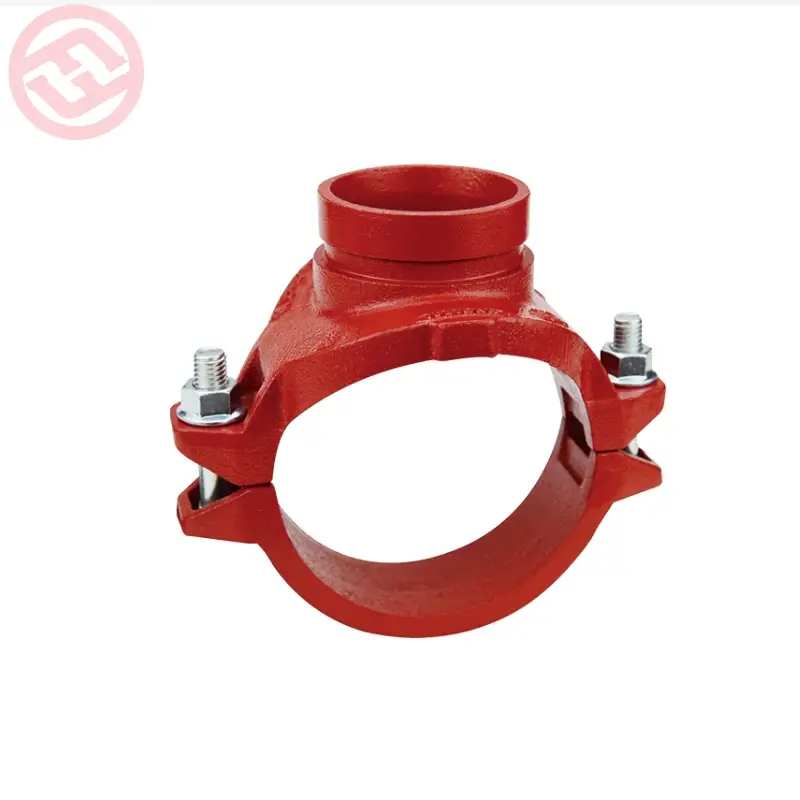How do grooved mechanical tee dimensions align with fluid dynamics principles in piping systems?
The dimensions of grooved mechanical tee fittings play a critical role in ensuring the proper functioning of piping systems and aligning with fluid dynamics principles.
Here are ways in which the dimensions of grooved mechanical tee fittings are designed to accommodate fluid dynamics principles:
- Flow Rate Considerations:
- The dimensions of the grooved mechanical tee are designed to facilitate the desired flow rates within the piping system. The tee’s diameter, branch size, and overall geometry are crucial factors in determining the flow capacity and minimizing pressure drops.
- Reduced Resistance and Turbulence:
- Grooved mechanical tee fittings are engineered to minimize resistance and turbulence in the flow of fluids. Smooth transitions between the main pipeline and the branch help reduce frictional losses and ensure efficient fluid movement through the tee.
- Uniform Flow Distribution:
- The design of grooved mechanical tees aims to achieve uniform flow distribution between the main pipeline and the branch. Proper dimensions help in creating a balanced flow profile, preventing issues such as uneven pressure distribution or localized turbulence.
- Avoidance of Dead Zones:
- Dead zones, areas of low flow or stagnant fluid, can lead to issues such as sedimentation or microbial growth. Grooved mechanical tee dimensions are configured to minimize the formation of dead zones, ensuring that fluid circulates effectively through the tee.
- Optimized Branch Angles:
- The angles at which the branch connects to the main pipeline are carefully considered in the tee’s design. Properly dimensioned branch angles help prevent flow disturbances, backflow, and eddy currents, contributing to smooth fluid dynamics.
- Minimized Pressure Drops:
- Grooved mechanical tee fittings are designed with dimensions that minimize pressure drops across the tee. By optimizing the internal geometry and ensuring proper alignment with fluid dynamics principles, pressure losses are reduced, maintaining efficient system performance.
- Consistent Velocity Profiles:
- Proper dimensions help maintain consistent velocity profiles across the grooved mechanical tee, ensuring that fluid flows smoothly without sudden changes in speed. This contributes to the stability of the flow and minimizes the risk of turbulence.
- Adherence to Hydraulic Principles:
- The dimensions of grooved mechanical tee fittings adhere to hydraulic principles, considering factors such as Reynolds number, flow regimes, and fluid properties. This ensures that the tee operates within the specified hydraulic parameters for optimal performance.
- Avoidance of Cavitation:
- Adequate dimensions help prevent cavitation, a phenomenon where low-pressure zones cause the formation and collapse of vapor bubbles in the fluid. grooved mechanical tee Cavitation can lead to damage to the tee and other components, and proper dimensions help mitigate this risk.
- Compliance with Standards:
- Grooved mechanical tee dimensions often conform to industry standards and specifications. Compliance with standards ensures that the tee meets recognized criteria for fluid dynamics, allowing for consistent performance and compatibility with other system components.
- Consideration of Fluid Properties:
- The dimensions of grooved mechanical tees take into account the properties of the fluids being transported. Factors such as viscosity, density, and temperature influence the tee’s dimensions to ensure compatibility and optimal flow behavior.
- Thermal Expansion Considerations:
- Properly dimensioned grooved mechanical tees account for thermal expansion and contraction, which can occur due to changes in fluid temperature. This consideration helps prevent issues such as stress on the tee and potential leaks.
In summary, the dimensions of grooved mechanical tee fittings are carefully engineered to align with fluid dynamics principles, promoting efficient and reliable operation within piping systems. By considering factors such as flow rates, pressure drops, and uniform flow distribution, these fittings contribute to the overall effectiveness and performance of the fluid transport system.
